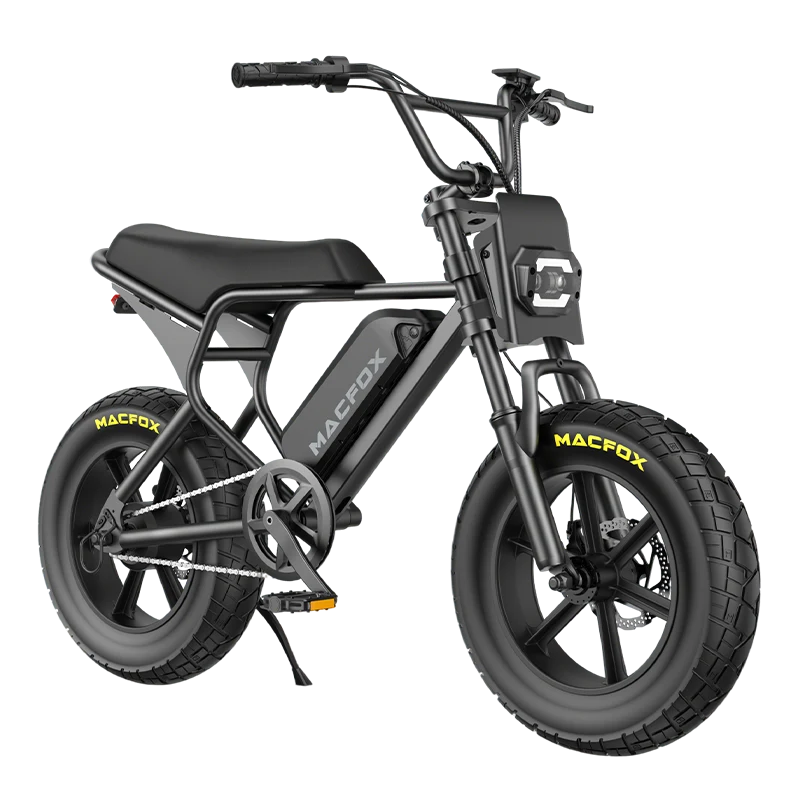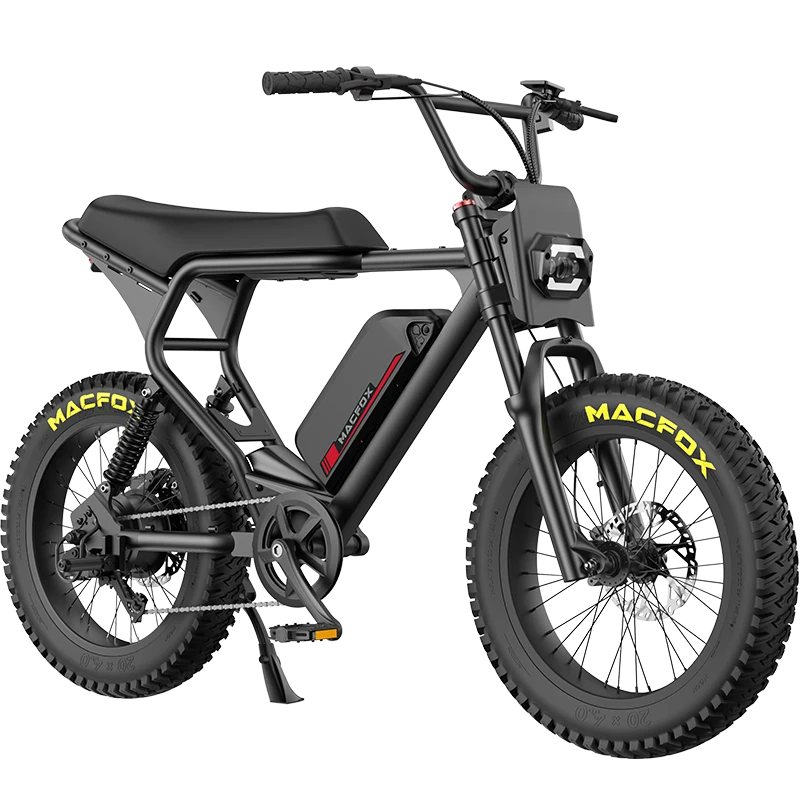Electric bikes have quickly become ideal ways to explore cities, take leisurely rides, and even tackle off-road trails. Their simplicity and accessibility make cycling accessible and enjoyable regardless of fitness level.
When buying an e-bike, one of the key decisions is selecting its motor type. Two primary varieties - hub and mid-drive motors - each offer unique advantages and disadvantages that could impact how your ride feels and performs.
Understanding the differences between these motors is vitally important, so this article provides an in-depth comparison that can assist in making an informed decision suited to your riding requirements.
What Is a Hub Motor?
Hub motors are among the most commonly seen motors on e-bikes. They can often be found mounted to either the front or rear wheel hubs, and they're generally built into these areas for ease of installation.
These motors work by directly turning the wheel and moving your bike. Because their motor is inside of it, no cables or gears need to be affected by its operation.
People prefer hub motors because they are easy and dependable, require minimal maintenance, and are typically easier to install.

Why Choose a Hub Motor?
Mes One of the primary advantages of selecting a hub motor is its ease of setup. Because it is integrated directly into the wheel, no major adjustments to your bike need to be made before using this type of motor.
Hub motors are an ideal solution if you want to convert a regular bike into an e-bike. They require low maintenance costs because they do not wear out chains or gears as quickly.
Hub motors offer steady, reliable power, which is great if you mostly ride flat roads. Many hub motors even feature energy capture features when braking to give your battery a little extra juice!
What Are the Downsides of a Hub Motor?
Hub motors may be flawed and struggle when going uphill because they do not work with your bike's gears to make climbing easier.
Riding up steep hills may take longer and force the motor to work harder than intended. Furthermore, the weight of the motor on its wheel could make for an unbalanced feel if it is located on the front wheel.
Uneven weight distribution makes the bike harder to control when turning or riding over bumpy terrain. In contrast, hub motors may make pedaling less natural than usual if you are used to using a regular bike.
Hub motors can also be problematic in wet or slippery conditions since they power the wheel directly and could potentially slip, making it harder to control.
Read more: 250w vs 500w E-Bike Motors
Understanding Mid-Drive Motors
Mid-drive motors present an alternative method of propulsion for an e-bike. As opposed to hub motors, mid-drive motors are located closer to the pedals than their hub counterparts and offer more versatility in terms of power delivery.
Motor-powered bikes drive along chain links, using gears for efficient power delivery. This makes them particularly suitable for terrains such as hills or trails.
Mid-drive motors are known for their superior performance under demanding conditions. They provide more torque and create an improved riding experience. Working alongside your bike's drivetrain, these mid-drive motors deliver a more natural riding feel.

Advantages of Mid-Drive Motors
Mid-drive motors stand out among their competition due to their superior hill-climbing capabilities. By utilizing your bike's gears, mid-drive motors can adjust their output accordingly to provide optimal torque, making steep climbs much simpler!
Consider John, an enthusiastic cyclist enjoying weekend rides through hilly terrain. When he started his commute on flat roads with an e-bike with a hub motor, things went well until he started exploring more challenging routes. Then, his bike struggled on steep inclines, making the climbs feel harder and less enjoyable than previously anticipated.
John discovered the advantages of mid-drive motors after learning about them and experienced instantaneous success: extra torque allowed him to conquer steep hills without having to overwork either his bike or himself; furthermore, their compatibility with gears made the ride smoother and more efficient, so he could enjoy his weekend adventures without concern for their performance.
Mid-drive motors also provide a more authentic pedaling experience. Many systems utilize torque sensors that adjust power based on how hard you pedal, creating an experience similar to traditional cycling.
Centralizing the motor improves weight distribution. This balance enhances handling and stability, making the bike agile in technical terrain or tight corners.
Mid-drive motors are also more energy efficient in terms of power consumption. By working in concert with the bike's gears, these mid-drive motors can optimize power delivery - helping extend range and battery life on longer rides.
Disadvantages of Mid-Drive Motors
Mid-drive motors have many advantages, yet also have some drawbacks. Driving through the chain increases wear on drivetrain components like chains and cassettes.
Due to their higher wear rates and costs over time, mid-drive motors require regular servicing and adjustments, which may be challenging for some riders.
Mid-drive motors tend to be more costly in terms of purchase price and installation costs; many require special bike frames or professional installation, which add to their total expense.
Mid-drive motors are heavier, making your bike seem bulkier and harder to control. This extra weight may be optional for casual riders who primarily ride flat terrain.
Pedal Response and Ride Feel
In maximum instances, hub motors use a cadence sensor, which measures how rapid you are pedaling and gives a constant degree of help.
This means you may get greater non-stop strength, however the motor gained’t reply as sensitively to how tough you’re pedaling.
In comparison, mid-drive motors normally include torque sensors that degree how a lot pressure you are applying to the pedals, bearing in mind extra specific modifications in power output.
This results in a more dynamic and responsive ride, specifically while hiking hills or accelerating.
Battery Life and Efficiency
When it comes to how far you can travel on a single charge, the type of motor in your e-bike plays a crucial role.
Hub motors are great for flat roads, making them ideal for city commuting or quick rides around town.
However, they tend to drain the battery faster when you hit hills or rough terrain.
In contrast, mid-drive motors shine in these challenging conditions.
They utilize your bike’s gears, optimizing power delivery and making them more effective for longer rides and hilly environments.
For example, if you’re using a hub motor with a 48V 10.4Ah battery (roughly 500 Wh), you might enjoy a range of about 30-40 miles on flat terrain with moderate use.
But venture into steeper inclines, and that range could drop to 15-25 miles as the motor works harder without the benefit of gearing.
Mid-drive motors, however, offer a different story.
With the same 48V 10.4Ah battery, you could potentially cover 40-50 miles on flat roads.
In hilly or mixed terrains, you might still achieve around 30-40 miles.
This efficiency means better battery management, making mid-drive systems a popular choice for riders who face diverse landscapes and want to make the most of their battery life.
Handling and Stability
A bike's motor can also affect its handling. Hub motors on front wheels, in particular, may make the ride feel unbalanced and cause the bike to shake more than it should.
Mid-drive motors help balance the bike, making it easier to control when turning or riding fast. Their central placement also keeps its balance more even, making handling simpler.
Better balance can be especially helpful when riding difficult trails or negotiating sharp turns - it will feel more stable and manageable, providing an easier riding experience overall.
Maintenance and Durability
Hub motors offer low maintenance costs when it comes to keeping an e-bike running smoothly. There are fewer moving parts involved with them, and therefore, fewer potential faults can develop.
Mid-drive motors may provide more power but require more upkeep due to how they interact with a bike's chain and gears.
Maintaining your bike requires regular checks and adjustments of various parts, so if regular bike maintenance isn't your thing, this might be something worth monitoring.
Cost
Budget considerations should always be considered when purchasing an electric bicycle. Hub motors are more budget-friendly options that work better on a tight budget.
Mid-drive motors offer excellent value, making them suitable for flat terrain and city rides. However, due to their additional power and features, they are more costly.
Mid-mounted motors cost more but perform better on hills and rough terrain. If you want a versatile full suspension electric bike, it might be worth the money to buy one.
| Feature/Aspect | Hub Motors | Mid-Drive Motors |
|---|---|---|
| Location | Integrated into the wheel hub (front or rear) | Positioned centrally near the pedals |
| Installation | Easy, minimal bike modification needed | More complex, may require special frame |
| Maintenance | Low, doesn’t affect drivetrain | Higher, can cause more drivetrain wear |
| Power Delivery | Steady on flat terrain | Optimized through bike's gears |
| Climbing Ability | Less efficient on steep hills | Excellent, adjusts with gears |
| Weight Distribution | Can feel imbalanced, especially front-mounted | Balanced, better handling |
| Pedaling Feel | May feel less natural | More natural, closer to traditional biking |
| Cost | Generally more affordable | More expensive |
| Ideal Use | Flat terrain, city commuting | Varied terrain, hills, off-road |
| Efficiency | Efficient on flat surfaces | More efficient on varied terrains |
Making Your Choice: Which Motor is Right for You?
Your decision about which motor best suits you depends upon where and how you intend to ride your e-bike. Hub motors may be ideal for flat, smooth roads with minimal maintenance—their low maintenance requirements make them perfect choices.
But for hills, rough trails, or those looking for a more traditional cycling experience, mid-drive motors could be your ideal solution. They provide more power and responsiveness but may come at the price of increased maintenance needs and higher costs.
The best way to select an electric bike is to test both types. Get acquainted with their riding experience and see which best suits your riding style and needs.
Picking out an electric bicycle motor that suits your lifestyle will ensure more enjoyable rides on an e-bike.
FAQs
What is the main difference between hub motors and mid-drive motors?
Hub motors are built into the wheels and offer simplicity, while mid-drive motors are centrally located, providing better power and handling.
Which motor is better for hill climbing?
Mid-drive motors are better for hills, as they work with the bike's gears to provide optimal torque.
Are mid-drive motors more expensive than hub motors?
Yes, mid-drive motors are generally more expensive due to their advanced features and better performance on varied terrain.


















